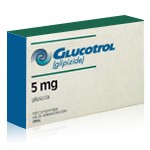Microangiopathy: A Deep Dive Into Small Vessel Disease and Its Complex Impact


Microangiopathy, also known as small vessel disease, is a pathological condition characterized by abnormalities in the smallest blood vessels of the body — capillaries, arterioles, and venules. Although seemingly minor compared to large vessel diseases like atherosclerosis, microangiopathy carries significant health implications, particularly when it affects the brain, kidneys, eyes, and peripheral nerves. It is commonly associated with chronic systemic diseases, especially diabetes mellitus and hypertension. This article aims to explore the complexity of microangiopathy, including its cerebral manifestations, links to dementia, diabetic complications, causes, and the pharmacological role of medications such as Glucotrol.
Microangiopathy of the Brain: A Subtle but Serious Threat
When microangiopathy affects the brain, it is referred to as cerebral small vessel disease or microangiopathic disease of the brain. This form often progresses silently and is primarily detected through neuroimaging, particularly MRI scans that reveal white matter changes, lacunar infarcts, and microbleeds. The pathology results from thickening of small cerebral arterioles and capillaries, leading to chronic hypoperfusion and disruption of the blood-brain barrier.
Patients with cerebral microangiopathy may initially show no outward symptoms. However, over time, they can develop subtle neurological deficits such as gait disturbances, urinary incontinence, and slowed cognitive processing. As the disease progresses, the risk of more severe outcomes — like ischemic stroke, transient ischemic attacks (TIAs), and multi-infarct dementia — significantly increases.
Is Microangiopathy a Form of Dementia?
Microangiopathy is not a form of dementia in itself, but it is a critical contributing factor to vascular dementia, which is the second most common type of dementia after Alzheimer’s disease. In vascular dementia, brain damage occurs due to impaired blood flow, often linked to small vessel disease. The microangiopathic changes in the cerebral vessels compromise oxygen and nutrient delivery, resulting in neuronal loss and cortical atrophy over time.
Clinical presentation may include memory lapses, poor executive functioning, difficulty concentrating, and changes in mood or behavior. These symptoms resemble other forms of dementia but may progress in a stepwise fashion, often following minor strokes or TIAs.
Notably, the cognitive impairments are sometimes reversible if the underlying vascular factors are controlled early in the course of the disease, highlighting the importance of timely diagnosis and management.
Microangiopathy in Diabetes: A Widespread Complication
One of the most prevalent contexts in which microangiopathy is encountered is diabetes mellitus, particularly type 2 diabetes. Diabetic microangiopathy develops due to prolonged exposure to high blood glucose levels, which causes biochemical changes that damage the endothelial lining of small blood vessels.
The manifestations of diabetic microangiopathy are multi-organ in nature. Diabetic retinopathy, characterized by microaneurysms, hemorrhages, and neovascularization in the retina, is a leading cause of blindness in working-age adults. Diabetic nephropathy results from glomerular damage and can eventually progress to end-stage renal disease, requiring dialysis or kidney transplantation. Diabetic neuropathy affects the peripheral nervous system, causing pain, numbness, and weakness, predominantly in the extremities.
The mechanisms behind diabetic microangiopathy are complex. Chronic hyperglycemia leads to the formation of advanced glycation end-products (AGEs), oxidative stress, and inflammatory responses that damage vascular integrity. This cascade of events thickens basement membranes, promotes capillary leakage, and causes microvascular occlusion, all of which exacerbate tissue ischemia and organ dysfunction.
What Causes Microangiopathy?
Microangiopathy can result from a combination of systemic, genetic, and environmental factors. Chronic hypertension is a major contributor, causing mechanical stress on the vascular walls and leading to hyaline arteriosclerosis. Diabetes mellitus, as previously discussed, initiates a series of metabolic disruptions that damage small vessels throughout the body.
Other contributing factors include smoking, dyslipidemia, obesity, and a sedentary lifestyle. Each of these exacerbates endothelial dysfunction and promotes a pro-inflammatory state conducive to microvascular damage. Aging is another important factor, as vascular elasticity and endothelial repair mechanisms naturally decline with time.
Autoimmune diseases, such as systemic lupus erythematosus and scleroderma, can also cause microangiopathy through immune complex deposition and complement activation in vessel walls. Infections, particularly in immunocompromised individuals, can further complicate or accelerate microvascular pathology.
Additionally, certain hereditary conditions, like CADASIL (Cerebral Autosomal Dominant Arteriopathy with Subcortical Infarcts and Leukoencephalopathy), specifically target the brain’s small vessels and are associated with early-onset strokes and dementia in affected individuals.
The Role of Glucotrol in Managing Microangiopathy
Effective control of blood glucose levels is essential in mitigating the progression of diabetic microangiopathy. One pharmacological agent commonly used in type 2 diabetes management is Glucotrol, the brand name for glipizide, a sulfonylurea class medication. Glucotrol acts by stimulating pancreatic beta cells to release insulin, thereby lowering blood glucose levels.
Glucotrol plays a significant role in the preventive strategy against microangiopathy by maintaining glycemic control. By reducing hyperglycemia, the drug helps minimize the endothelial dysfunction and oxidative stress responsible for microvascular injury. Early intervention with Glucotrol or similar agents can delay the onset of diabetic retinopathy, nephropathy, and neuropathy, especially when combined with lifestyle changes such as diet and exercise.
However, Glucotrol is not without risks. Its mechanism can sometimes lead to hypoglycemia, especially in elderly patients or those with inconsistent eating patterns. Therefore, dosage adjustments and careful monitoring are essential. Patients with liver or kidney impairment require special consideration, as altered drug metabolism can increase the risk of adverse effects.
It is also important to note that Glucotrol is typically most effective during the early stages of type 2 diabetes when some beta-cell function is still preserved. As the disease progresses and beta-cell function deteriorates, combination therapy or insulin supplementation may be necessary to achieve optimal glycemic control.
Prevention and Management Strategies Beyond Medication
While pharmacological treatments like Glucotrol form an important part of microangiopathy management, holistic approaches offer additional benefits. Dietary modifications that reduce sugar intake, improve lipid profiles, and enhance antioxidant consumption help support vascular health. Regular physical activity improves insulin sensitivity, aids weight management, and promotes circulation, all of which are crucial in controlling or reversing microvascular damage.
Blood pressure control is equally vital, especially in patients with coexisting hypertension. ACE inhibitors and angiotensin receptor blockers (ARBs) not only manage blood pressure but also provide renal protection and may have direct benefits on the microvasculature.
Smoking cessation and moderation of alcohol intake also contribute to reduced vascular risk. Psychological support and patient education empower individuals to adhere to treatment regimens and make informed lifestyle choices, improving long-term outcomes.
Regular screening for microvascular complications is essential, particularly for diabetic individuals. Annual eye exams, kidney function tests, and neuropathy assessments enable early detection and intervention, preventing irreversible damage.
Research and Future Perspectives
Advancements in biomedical research continue to uncover the molecular pathways involved in microangiopathy. Novel therapies aimed at targeting AGEs, improving endothelial function, and modulating immune responses are under investigation. Additionally, new antidiabetic drugs like GLP-1 receptor agonists and SGLT2 inhibitors are showing promise in reducing cardiovascular and renal complications, potentially offering broader protection against microvascular damage than older agents like Glucotrol alone.
Emerging imaging technologies, including advanced MRI techniques and retinal scans, allow for earlier and more accurate detection of microangiopathic changes. These tools may soon become integral to routine screening protocols in high-risk populations.
Genetic studies are also shedding light on individual susceptibility to microangiopathy, paving the way for personalized medicine. Understanding genetic predispositions can help tailor interventions and identify patients who may benefit most from aggressive preventive strategies.
Conclusion
Microangiopathy is a multifaceted condition with widespread health implications, particularly in the context of chronic diseases such as diabetes and hypertension. While it may begin as a silent disease, its long-term consequences—including vision loss, kidney failure, neuropathy, and cognitive decline — can be devastating.
Understanding the pathophysiology of microangiopathy, recognizing its early signs, and implementing effective treatment strategies are essential in minimizing its impact. Medications like Glucotrol play a vital role in managing the glycemic control that underpins diabetic microangiopathy. However, comprehensive care — including lifestyle changes, regular screening, and emerging therapies — offers the best hope for preserving quality of life and preventing irreversible damage.
In the evolving landscape of medical care, staying informed and proactive remains the cornerstone of effective microangiopathy management.
Article Post: Editorial Team of RXShop.md
(Updated at May 19 / 2025)
